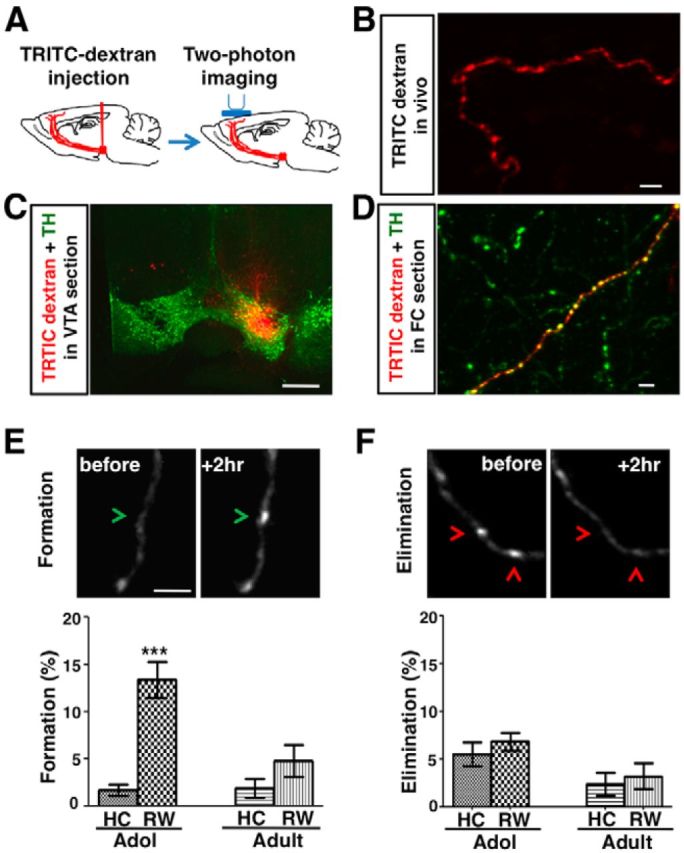Figure 1.

Wheel running enhances the formation of mesofrontal boutons in adolescent mice. A, Diagram showing experimental conditions. B, In vivo two-photon image of TRITC-dextran (red)-labeled axon in the frontal cortex (M2 region, layers I-III). C, Confocal image of coronal midbrain section showing the overlap of injected TRITC-dextran (red) with the VTA dopamine neurons labeled by TH immunofluorescence (green). Scale bar, 500 μm. D, Confocal image of TRITC-dextran (red) labeled axon in a frontal cortical section immunostained for TH (green). E, F, Top, In vivo two-photon images showing examples of bouton formation (E, green arrowheads) and elimination (F, red arrowheads). Bottom, Percentage of boutons formed (E) and eliminated (F) under home cage (HC) and running wheel (RW) conditions in adolescent (∼4–5 weeks) and adult (∼2–4 months) male mice heterozygous for an Arc-GFP gene expression reporter. For E, ***p < 0.001, Bonferroni's posttest; ANOVA age-by-condition interaction, F(1,19) = 9.89, p = 0.005. For F, ANOVA age-by-condition interaction, F(1,19) = 0.04, p = 0.842. n = 6 mice for each group except adult RW, where n = 5. Scale bars: B, D, E, F, 5 μm; C, 500 μm.
